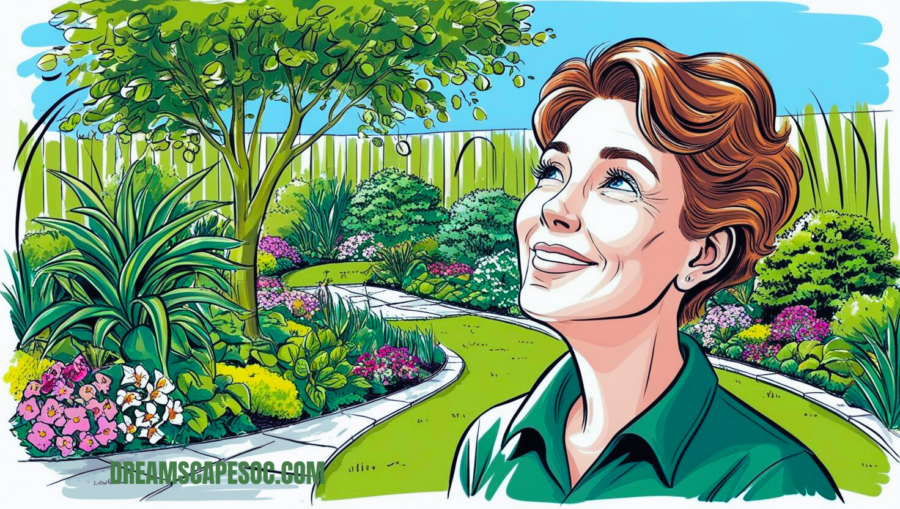Introduction to Natural Pest Control
Pest control is essential to maintaining a healthy and thriving garden or home environment. Natural pest control methods offer practical solutions without the risks associated with synthetic chemicals. This article will explore the best natural pest control methods, breaking down the ingredients, techniques, and benefits that make them stand out. Whether you’re a seasoned gardener or a homeowner looking for safer alternatives, understanding these methods will help you protect your space naturally and sustainably.
Click here for instant access to Landscape Design Ideas.
Overview: The Importance of Natural Pest Control
Natural pest control methods have gained popularity for managing pests without compromising the environment. These methods are not just about eliminating pests.
Transform Your Outdoor Space Today – Download Your Free Landscaping and Gardening Checklist
A Symphony of Natural Ingredients
The magic of natural pest control lies in using eco-friendly ingredients daily. Here’s a closer look at some of the most effective natural pest control methods and the ingredients that power them:
| Method | Ingredients | Pests Targeted |
| Neem Oil Spray | Neem oil, water, mild soap | Aphids, whiteflies, spider mites |
| Diatomaceous Earth | Food-grade diatomaceous earth | Ants, fleas, bedbugs |
| Garlic Spray | Garlic, water, vegetable oil, soap | Caterpillars, beetles, aphids |
| Companion Planting | Marigolds, basil, chives, mint | Various insects |
| Beneficial Insects | Ladybugs, praying mantises, nematodes | Aphids, caterpillars, grubs |
| Beer Traps | Beer | Slugs, snails |
| Essential Oil Sprays | Peppermint, lavender, eucalyptus oils | Mosquitoes, flies, ants |
| Homemade Soap Spray | Castile soap, water | Aphids, mites, whiteflies |
Caloric Content and Nutritional Breakdown (Metaphorical)
While “caloric content” is more applicable to food and drink, we can think of the effectiveness and environmental impact of each natural pest control method in similar terms. Some methods may require more frequent application (higher “caloric intake”) to be effective, while others are potent and long-lasting (“low calorie, high nutrient”). Below is an illustrative breakdown:
| Method | Effectiveness | Environmental Impact | Ease of Use | Frequency of Application |
| Neem Oil Spray | High | Low | Moderate | Weekly |
| Diatomaceous Earth | Moderate | Low | Easy | Bi-weekly |
| Garlic Spray | High | Very Low | Moderate | Bi-weekly |
| Companion Planting | Moderate | Very Low | Easy | Seasonal |
| Beneficial Insects | High | Very Low | Easy | Seasonal |
| Beer Traps | Moderate | Low | Easy | Weekly |
| Essential Oil Sprays | High | Low | Moderate | Weekly |
| Homemade Soap Spray | Moderate | Low | Easy | Weekly |

Unique Selling Points
What sets natural pest control methods apart is their ability to provide effective pest management without the downsides of chemical pesticides. Here are some unique aspects:
- Eco-Friendliness: Natural methods are biodegradable and do not leave harmful environmental residues.
- Safety: These methods are safe for children, pets, and beneficial insects like bees and butterflies.
- Sustainability: Using natural ingredients contributes to a sustainable gardening and pest control approach.
- Cost-Effectiveness: Many natural pest control methods utilize inexpensive ingredients.
The Experience
Implementing natural pest control methods is more than just a task; it’s an experience that connects you to the environment. Whether mixing up a garlic spray or introducing ladybugs to your garden, each step is a reminder of the power and beauty of nature. Here’s a breakdown of the sensory and practical experience of using these methods:
- Visual: Watching beneficial insects like ladybugs patrol your plants or seeing the immediate effect of diatomaceous earth on pests.
- Tactile: The process of applying sprays, spreading diatomaceous earth, or planting companion plants.
- Olfactory: The strong scent of garlic spray or the refreshing aroma of essential oil sprays.
- Auditory: The quiet rustle of plants as you work or the soft buzzing of bees attracted to your companion plants.
Click here for more information on Natural Pest Control
Ingredients Breakdown: Understanding Each Component
Understanding each ingredient’s role is essential to truly appreciate natural pest control methods. Below is a detailed breakdown of key ingredients and their effectiveness compared to alternatives:
| Ingredient | Characteristics | Role in Pest Control | Alternative |
| Neem Oil | Extracted from neem tree seeds, a strong smell | Disrupts pest hormones and deters feeding | Pyrethrin (synthetic, more toxic) |
| Diatomaceous Earth | Fossilized remains of diatoms, fine powder | Dehydrates and kills pests on contact | Boric Acid (synthetic, less eco-friendly) |
| Garlic | A pungent smell, antibacterial properties | Repels pests, antifungal properties | Onion (less effective) |
| Essential Oils | Aromatic, derived from plants | Repels insects, masks scents | Synthetic fragrances (less effective, not eco-friendly) |
| Castile Soap | Gentle, biodegradable soap | Breaks down pest’s protective coating | Detergent (synthetic, harsher on plants) |
Tips for Implementing Natural Pest Control
Successfully using natural pest control methods involves more than just applying a solution. Here are some tips to maximize effectiveness:
- Start Early: Start pest control when you notice the first signs of pests to prevent infestations.
- Know Your Pests: Identify the specific pests you’re dealing with so you can choose the most effective method.
- Rotate Methods: Avoid pest resistance by rotating different natural methods.
- Monitor Regularly: Monitor your plants and reapply treatments as needed.
- Combine Methods: For a comprehensive approach, combine methods (e.g., companion planting with neem oil).
- Be Patient. Natural pest control may take longer to show results than chemical methods, but it’s worth the wait.
- Maintain Garden Health: A healthy garden is less susceptible to pests, so focus on overall plant health as a preventative measure.
Frequently Asked Questions About Natural Pest Control Methods
Natural pest control methods often raise questions for those new to the concept. Below are some common questions and detailed answers to help you better understand these methods:
What is natural pest control?
Natural pest control involves eco-friendly, non-toxic pest management methods. This can include using natural ingredients like neem oil, introducing beneficial insects, or employing physical barriers.
How effective are natural pest control methods?
Natural methods may take longer than chemical pesticides but are highly effective when used correctly. They are also safe for the environment and non-target species.
Can I use natural pest control methods indoors?
Many natural pest control methods are safe for indoor use. Essential oil sprays, diatomaceous earth, and homemade soap sprays can manage indoor pests like ants, spiders, and fleas.
What are some common pests that natural methods can control?
Natural methods can control many pests, including aphids, spider mites, whiteflies, ants, slugs, and mosquitoes.
How often do I need to apply natural pest control treatments?
The frequency of application depends on the method used and the severity of the pest problem. Generally, treatments may need to be applied weekly or bi-weekly.
Are there any risks associated with natural pest control?
While natural pest control methods are generally safer than chemical alternatives, some ingredients are used, especially around pets and small children.
Can I make my natural pest control solutions?
Absolutely! Natural pest control solutions can be made at home using common ingredients like garlic, vinegar, and essential oils.
Do natural pest control methods harm beneficial insects?
Most natural pest control methods are selective and do not harm beneficial insects. However, they must be used carefully to avoid unintentional harm.
What is companion planting, and how does it work as pest control?
Companion planting involves growing certain plants to naturally repel pests. For example, marigolds can deter nematodes, and basil can repel mosquitoes and flies.
Where can I purchase natural pest control products?
Natural pest control products are widely available at garden centers, online retailers, and some grocery stores. You can also make many solutions at home.
Conclusion: Embrace the Power of Natural Pest Control
The health implications of chemical use and natural pest control stand out as vital, sustainable choices. Incorporating these methods into your gardening and home care routines is a good idea. Their effectiveness lies in their simplicity, eco-friendliness, and harmony with nature.
Embrace the power of natural pest control, and enjoy knowing that your approach to managing pests is both responsible and effective. Whether you’re a gardener looking to protect your crops or a homeowner aiming to keep your living spaces pest-free, these methods provide a reliable, safe, and sustainable solution. Over time, you’ll find the right balance that works best for your needs, creating a healthier environment for all.
Final Thoughts: Natural Pest Control as a Lifestyle
Natural pest control is more than just a set of techniques. By opting for natural methods, you align yourself with a growing movement that values the health of our ecosystems, the well-being of all living creatures, and the long-term preservation of our planet.
Natural pest control offers possibilities, whether you’re just starting out or looking to deepen your knowledge. From the simple pleasure of brewing a garlic spray to the more complex art of companion planting, each method meaningfully connects you to the rhythms of nature. So, as you move forward, consider the pests you wish to manage and the broader impact of your choices. By doing so, you become a steward of the environment, nurturing a space where all life forms can thrive.


